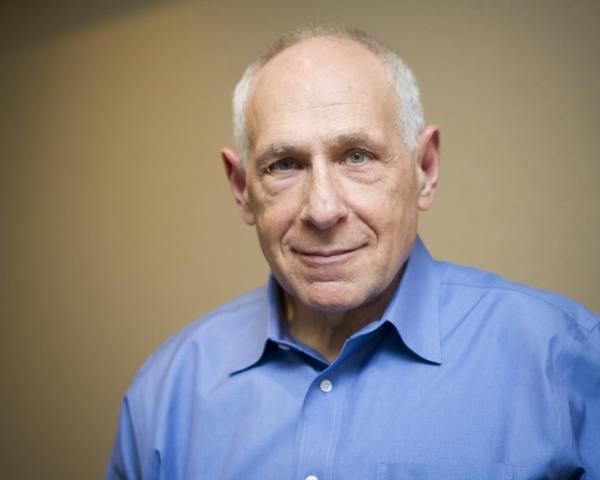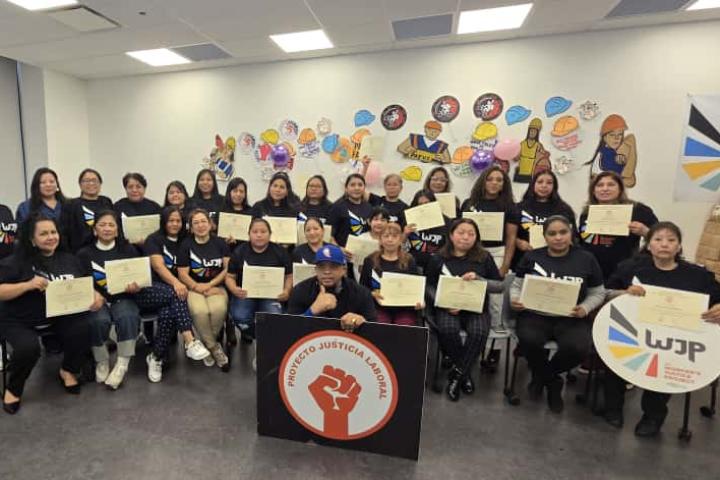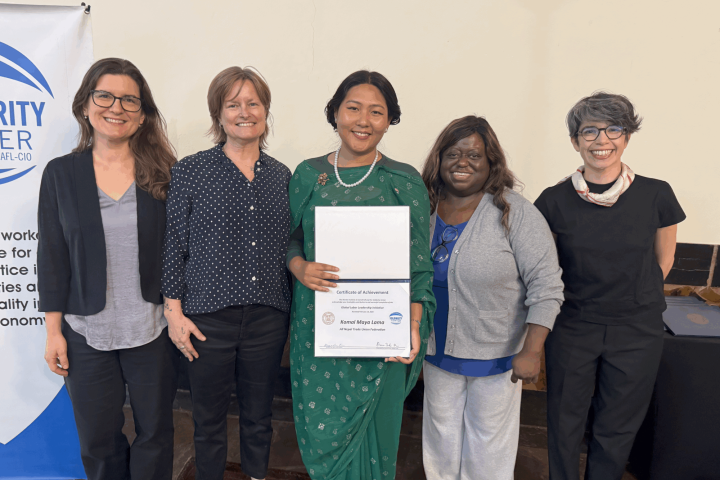
Healthcare Insights: Workplace Innovation In New York’s Public Health Care System
John August and Lily Mackey explore the impact of the doctors' union at the nation's largest public health system
A major purpose of this column, Healthcare Insights, is to shine a bright light on the healthcare workplace. Millions go to work each day to care for the waves of people in need of care and compassion. These workers are saddled with many challenges as they meet the patient on their own terms.
Each day, the patients keep coming and are welcomed by our friends and neighbors who compose the largest workforce in the United States other than those who work for government. If healthcare accounts for nearly 20% of GDP, we can visualize the size of the workforce, a workforce that in order for us to understand and appreciate must be seen from the lens of their workplace. The healthcare workplace is where care is delivered.
We want to explore the underlying conditions in one major health system in the country, New York City Health and Hospitals, that enabled the following sentiment to be expressed: “We overcame the sense of helplessness we felt in the early days of the pandemic though collaborative dialogue that established an ethical sense of solidarity with our patients and with one another.”
Solidarity. Leadership. Each other.
Our nations’ healthcare workplaces are inherently broken down into small workplaces of units, departments, offices, and small clinical and administrative settings. These settings bring together a hierarchy of people, some with advanced and professional degrees, and some with strictly on-the-job training. That is where the millions of healthcare workers go each day to provide care.
Americans don’t like to think about healthcare as a rationed set of services and needs, yet, as we have learned starkly in the time of the pandemic, healthcare is fraught with disparity in access, quality, and patient experience, especially when seen through a lens of equity. Indeed, healthcare is rationed, like it or not, into what has become a tragedy manifested in a disaggregated, free market of care and coverage.
New York City has always been a place of profound diversity of class, race, ethnicity, and national origin. People who don’t live in the City can’t truly appreciate the millions of people struggling to make a secure life for themselves and their families amidst the glitter of Wall Street, Broadway, its palaces on Fifth Avenue, and its famous skyline of glass towers.
Health and healthcare are top of mind for all New Yorkers. It was in New York City where the nation’s first large citywide experience with the COVID-19 pandemic occurred. Conditions for community spread—crowded streets, housing and public transportation—turned out to be the perfect storm for the highly contagious novel coronavirus for which there were no treatments available. The emergency rooms overflowed, and so many died in a very short period of time.
While all the major health systems in New York City care for poor and immigrant populations, only one health system, New York City Health + Hospitals (NYC H+H) cares exclusively for the poor and immigrant population. NYC H+H is always strapped for resources.
As such, NYC H+H which serves 1.4 million people each year, does so with challenges that no other health system faces.
It is within this context that we want to share stories of profound innovation coming from the frontlines of care, from the workplaces of the public health system in New York City.
It seems self-evident that if innovation and improvement can derive from the least wealthy of institutions, so much can (and must) be done to find the opportunities to improve care and health for everyone. The question is “HOW”?
We will take an appreciative look at the work of the Collaboration Councils that have been established in all 22 of the City’s public health system facilities. Just as important, these Councils were established through collective bargaining. Many health systems make efforts, some more successful than others, to create improvement teams that work to achieve measurable improvement for patients. It is quite rare that such efforts occur through collective bargaining.
We know from experience and research that unionized settings can support successful forms of workplace innovation. This is due in large part to the unique capability that unions have to provide cohesive strategic communication and education to a vast number of people.
It is in these Councils that frontline doctors and their system and facility leadership come together each month to share experiences, data, and methods for improvement in care for the patients they serve, and just as importantly, learn to enhance the experience, well-being, and engagement of the frontline doctors.
- We will share the experiences from executives and frontline clinicians in the Collaboration Councils.
- We will share examples of improvement outcomes for patients as well as examples of improved engagement and well-being of frontline doctors.
But first, some background on the development of the Collaboration Councils, a strategic initiative through collective bargaining by the union which represents the doctors of NYC H+H, Doctors Council SEIU.
The Collaboration Councils were created from the decades-long truth that healthcare is constantly evolving. Doctors Council SEIU, the largest union of doctors in the nation, recognized that the healthcare workplace must be built to be responsive.
By the time of the implementation of the Affordable Care Act in 2014, New York City hospitals were transforming in terms of their roles. Many new structures such as Patient Centered Medical Homes and new systems of value-based payments were coming on line. In this moment of great change to New York City hospitals, it became evident to the Doctors Council that union and management must transform with the system itself if these changes were to be successful.
To assist in the Doctors Council inward reflections on how to lead change, the union reached out to Cornell ILR and sought three areas of support:
- To assist in the design and execution of a survey of its members to determine what were the top of mind interests of the Doctors that would help determine the priorities for the union
- To develop demonstration projects of patient care improvement
- To assist in the writing of a white paper that would reveal the recommendations of the doctors derived from the survey and from interviews with union members
The survey produced an overwhelming 98% majority who indicated that the doctors believed that they have a responsibility to take a lead and have a voice in quality improvement work. 81% of the doctors would engage in quality improvement activities if they had a voice to have a meaningful role.
The survey results showed that over 80% of doctors were not consulted by management for input in areas of healthcare management
The union produced a comprehensive white paper in the Spring of 2014 entitled, “Putting Patients First Through Doctor, Patient, and Community Support, A Call to Action from Doctors Council SEIU to the Mayor and the leadership of HHC”.
Shortly after the presentation of the white paper to City leadership, collective bargaining commenced for a renewed union contract.
The bargaining was very challenging. The previous administration was not able to reach agreements with City unions. The incoming DiBlasio administration made a commitment to reach agreements, but had to accomplish this in a time of fiscal constraint and austerity. As challenging as that undertaking was, the Doctors Council added a new dimension to the bargaining: how to implement the aforementioned “Call to Action” which emphasized the essential role of frontline clinicians in the improvement of patient experience while at the same time improving the engagement of the frontline clinicians.
The administration listened politely to the issues raised about inclusion of the doctors in quality improvement but did not show interest in the inclusion of these issues in the collective bargaining agreement. Near the end of the negotiations, frontline doctors gave example after example of how their own initiatives to improve patient outcomes had been ignored and how the advancement of demands for improvement from the administration failed to gain ownership of these processes by the doctors.
It was out of this exchange at the bargaining table that the Collaboration Councils were established.
The Agreement established:
- A System Wide Collaboration Council that meets quarterly
- Facility Based Collaboration Councils established in all NYC H+H facilities that would meet monthly
- A guarantee of paid time for doctors to attend and prepare for these meetings
- A designation of top executive level leadership from all facilities to participate in the meetings
Doctors Council contracted with the Institute for Healthcare Improvement (IHI), and in November 2015, the management and the union collaborated financially and logistically to sponsor a 3-day training by IHI experts in quality improvement science and processes. This step was very important because existing systems of quality improvement employed by the health system were seen as top-down driven and inconsistently applied.
The clear intent of the 3-day training was to build a system-wide consensus of a jointly accepted set of methods for quality improvement.
The first Facility Based Collaboration Councils were launched in February of 2016.
The roles, operation, and significance of each Collaboration Council have fluctuated and evolved as each facility has undergone changes of staffing and operations, thus reflecting the pervasive dynamism of healthcare. This has never been more apparent than in the face of the COVID-19 pandemic. The Collaboration Councils collectively went on pause in the first few months of the pandemic, but began their meetings again by September 2020. When the Facility Based Collaboration Councils (FBCC) returned to their regular meetings, they were faced with the same improvement projects from before, as well as a host of new challenges they hoped to address.
As the world has begun to return to regular operation, FBCC have been critical in identifying new challenges brought about by the pandemic. Given this pre-existing improvement infrastructure, H+H hospitals have been able to be proactive in their recovery, despite being located in the “Epicenter of the Epicenter”.
This article is part one of a two part series. In part two we will highlight the results and successes of the Collaboration Councils.
About the authors:
John August is the Scheinman Institute’s Director of Healthcare and Partner Programs. His expertise in healthcare and labor relations spans 40 years. John previously served as the Executive Director of the Coalition of Kaiser Permanente Unions from April 2006 until July 2013. With revenues of 88 billion dollars and over 300,000 employees Kaiser is is one of the largest healthcare plans in the US. While serving as Executive Director of the Coalition, John was the co-chair of the Labor-Management Partnership at Kaiser Permanente, the largest, most complex, and most successful labor-management partnership in U.S. history. He also led the Coalition as chief negotiator in three successful rounds of National Bargaining in 2008, 2010, and 2012 on behalf of 100,000 members of the Coalition.
Lily Mackey is an undergraduate in Cornell University’s School of Industrial and Labor Relations. She served as a Research Assistant during the Spring semester, 2022 and assisted on this paper.



